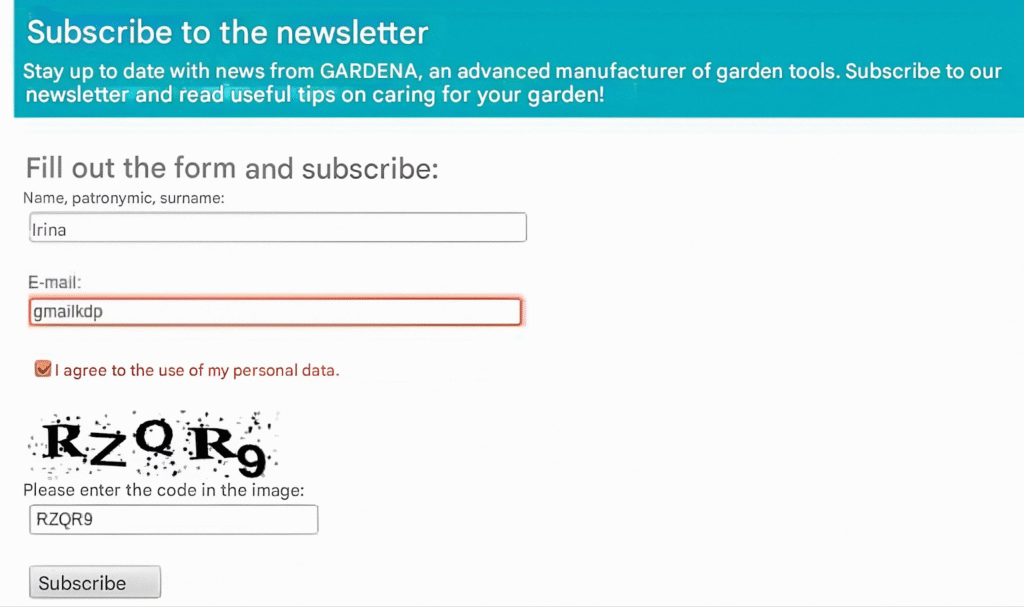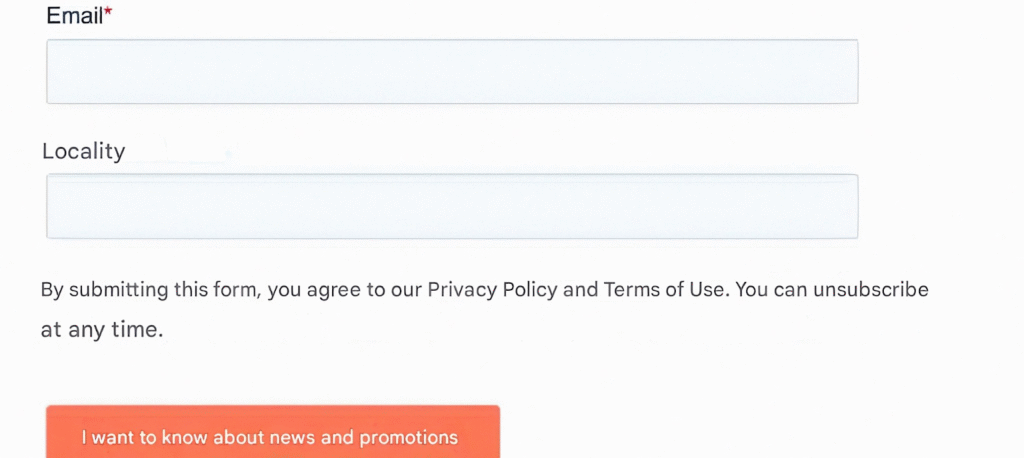Hi there!
My name is Ruslana, and I’m a content marketer at Solve Marketing. Today, I have spoken with our team to explore the role of email marketing for SaaS products.
Violetta — Head of PM:
SaaS (software as a service) is software that doesn’t require installation — you access it through the internet.
Different SaaS products solve specific business tasks (like financial tracking or data analysis), and also meet everyday user needs: listening to music, creating to-do lists, posting ads, and more.
Why is email marketing important for SaaS?
Kateryna — COO at Solve Marketing:
Some believe email is on its way out, giving way to messengers. That’s not true. Email can be one of the most powerful tools for lead generation and sales — if used correctly.
In SaaS, emails serve many purposes:
- It’s the primary method for user registration and communication.
- Users receive updates on service changes, payment reminders, or subscription expiration notifications.
What other roles does email play?
Violetta — Head of PM:
Oh, emails have a lot of functions!
- Help users adapt — emails guide users from subscribing to registering in the service.
- Educate clients — they highlight new or underused features and answer frequently asked questions.
- A powerful sales channel — emails allow for personalized offers and help build individual communication with each client.
Contact database for SaaS: how to build and maintain it?
Andrii — Marketing & Traffic Manager:
In order for email marketing to be as effective as possible, you need a high-quality contact database. High quality does not refer to the number of addresses, but rather to the audience.
There is only one condition that makes it possible to build trusting communication: the person consciously left their email address either during registration or while subscribing to the service.
Can you just buy a ready-made list?
Theoretically, it is possible, but in reality, it is NOT RECOMMENDED. The consequences of working with a purchased database can be disastrous. There are several reasons for this:
1. Most emails will end up in the spam folder.
A large number of addresses does not guarantee a large number of sales. People from the database are not expecting your email. They do not know you or your product. Your unsolicited email will cause irritation, so it can easily end up in spam.
2. As a result, you will be blacklisted and lose your domain.
The more of your emails end up in this section, the higher the chance of losing your domain.
Let me explain in more detail: the volume of spam on the internet reaches terabytes of letters and advertisements. Therefore, search engines, browsers, and antivirus programs fight against it — they track the domains from which spam is sent and add such domains to the blacklist.
A black list is a list of IP addresses and domains that have been blocked on suspicion of sending spam. The purpose of blacklists is to reduce the percentage of spam sent.
If a domain is included in such a list by Gmail or another email service, mailings will automatically be sent to spam, bypassing the “Inbox” folder.
Ultimately, a domain that sends spam may be blocked. This affects the entire business, as the service’s website is linked to the domain.
3. Loss of reputation and time
In order to send emails to users, you must obtain their permission. It is clear that the recipients in the database you purchase were not asked for permission to subscribe to your service’s mailing list.
After all these “adventures,” it will be difficult to restore the project’s email marketing. You will need to start from scratch. Develop a new strategy and legally collect a database.
Brand reputation, customer loyalty, and high email marketing results require time and skill. And easy ways only create problems here.
So, how should you collect your email list?
First of all, your website should have forms for registration, subscription to your news, etc. The success of your database depends on the forms on your website.
There are several points that will simplify the form filling stage.
1. Keep the number of fields in the form to a minimum. You should only include the fields that you really need. With each additional field in the form, the conversion rate will decrease.
2. Simplify the form filling process and do not complicate it with additional features such as captchas, password repetition, or additional redirects to a confirmation page.
3. Appearance of the form: vary the colours of the form and buttons, add elements. The overall style of the form should stand out on the page and may differ from the overall design. This will make the form memorable and attract attention.
NO

NO
YES

YES

The main rule is to get users’ consent to use their email address for your newsletters.
For example, in working with a SaaS project we’ve been developing for over three years, email marketing plays a key role in informing users and building loyalty.
The active mailing list now includes over 90,000 addresses — but it wasn’t always like that. When we first started, the list had fewer than 10,000 contacts, most of which were outdated.
Based on our experience, we recommend the following:
- Write infrequently and to the point.
Forget about newsletters with weather forecasts and the latest celebrity news. Give people something useful! Become that friend who always arrives on time with useful information: remind them of some of the service’s features, let them know that they have been with you for a year, so they are now eligible for special conditions under your loyalty programme.
Is your SaaS profile music track processing? Tell them about new features or remind them how much music they have already created with your help.
Writing every day is a no-no. The exception: if you have segmented your database and this group of people really wants to receive emails from you every day.
- Update and filter
This primarily involves removing inactive subscribers. Make it a rule to audit your contact database several times a month. We recommend deleting contacts who have not interacted with your emails for more than three months.
Yes, it is painful to say goodbye to addresses from the database, but they will be replaced by new contacts who will interact with the product and bring profit.
What types of letters do we use?
1. Trigger letters. They are sent in response to a specific user action: purchase, registration, etc. After trigger messages, we expect a response from the user: returning to the service, switching to a new tariff, purchasing additional features.
An example of such a letter:
Welcome letters, which are sent in response to a subscription or registration.
These are mandatory letters for SaaS in any niche. With the help of such letters, users get acquainted with the service and its capabilities.
Such letters can help complete the registration process or determine the necessary functionality.
In addition, there is a group of trigger letters that motivate users to complete an action. They are sent to encourage users to set up their account, check the validity of their information, or update their payment details.
The last group — informational technical letters — are trigger letters that notify users of password changes.
2. Reactivation emails.
Emails to users who have stopped using the service or reading the newsletter. They will help you get a sale if a customer has registered but has not paid or has stopped using the service. You can bring such users back with interesting offers, promotions, and discounts.
3. Holiday newsletters can be tied to various holidays: New Year, Christmas, anniversary of using the service. Usually, holiday newsletters offer certain discounts.
4. Regular newsletters. The secret to the success of these letters is in the name — regularity. Such newsletters are usually prepared by a content marketer. As a rule, such letters tell about new service features, promotions, events, and share useful materials and research.
For example, for IPTV services, relevant selections by genre, content type, sports mailings, and much more.
It is important to monitor the service’s audience and periodically conduct surveys: what topics are of interest, how often would you like to receive letters from the service. This allows you to keep in touch with users, give them maximum benefit and sell via email 🙂
How to correctly evaluate mailing results. Which metrics are relevant for SaaS?
Andrii, Marketer, Traffic Manager:
First of all, add a unique UTM tag to the links in each email. This way, you’ll be able to track clicks from a specific email via Google Analytics or any other analytical tool your business uses.
As for the metrics, pay attention to:
Delivery — shows how many of the sent emails actually reached users. This will also help clean your database from unnecessary contacts who aren’t even receiving your messages.
Opens — this is the ratio of opened emails to delivered ones. If the percentage is low and continues to decline, it’s time to reconsider your email marketing strategy, and refine your subject lines and email topics. The subject line is the first thing a user sees — it must act as a hook to grab their attention.
Clicks — this metric shows how many people clicked on links from the email to your service, personal account area, or store. It all depends on where you are directing users and for what purpose. This is where you can track sales generated through email.
It’s also important for businesses to track ROMI — return on marketing investment. This metric shows whether email marketing is even worth the effort, whether it pays off, and how much profit it brings.
Conclusion:
- Start collecting and segmenting your contact base as early as possible. Never use someone else’s lists!
- Start small. Don’t wait until your database reaches thousands of subscribers — learn to engage with your audience from the very beginning.
- Write infrequently but with purpose. Make email marketing a channel for valuable news and attractive offers.
- Set up analytics to get used to evaluating the performance of your SaaS email marketing based on real numbers.
- Ask your audience what they find interesting and plan your content accordingly.
Email marketing can become a major lead generation tool for SaaS. All it takes is a bit of time and the right approach to working with emails.
If you want to test this tool, feel free to reach out for a consultation — we’ll help you build an email strategy tailored to your project.




